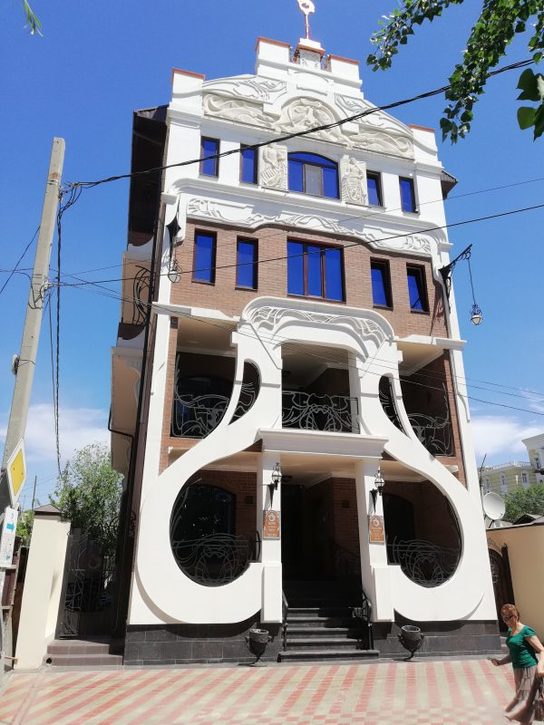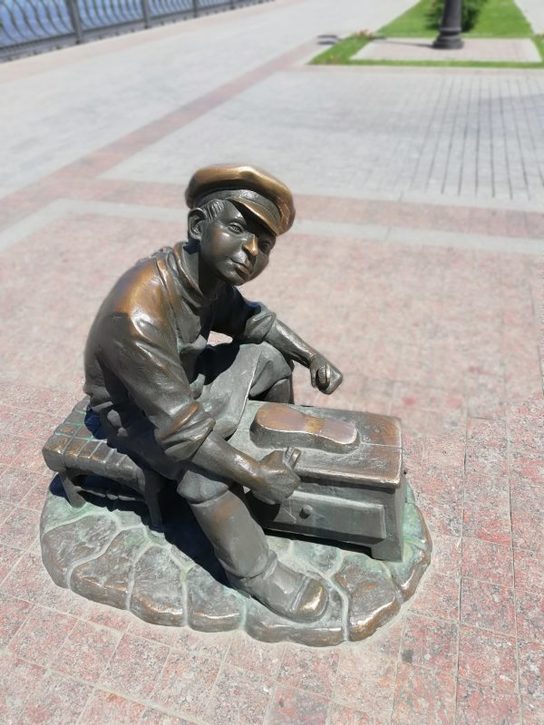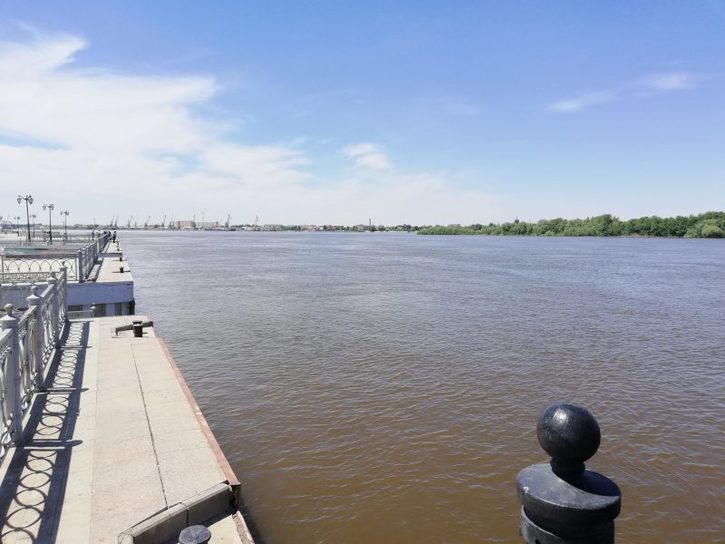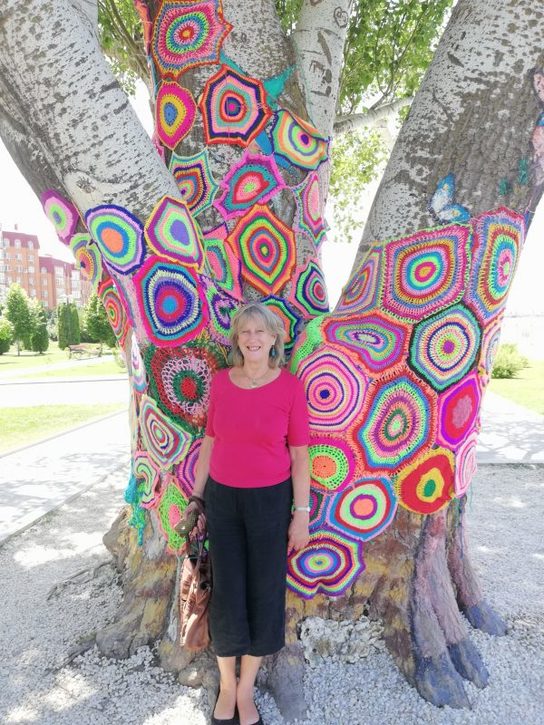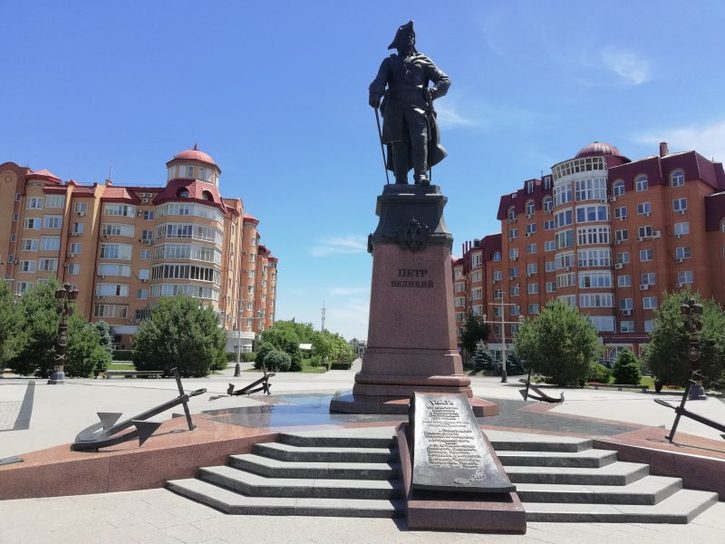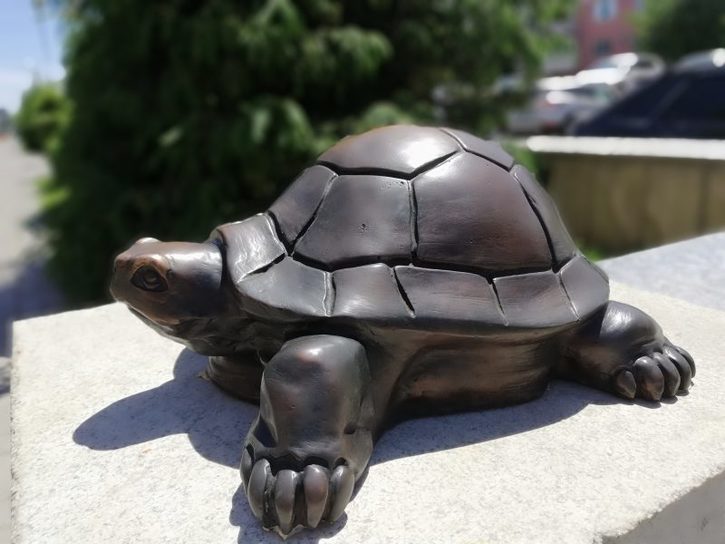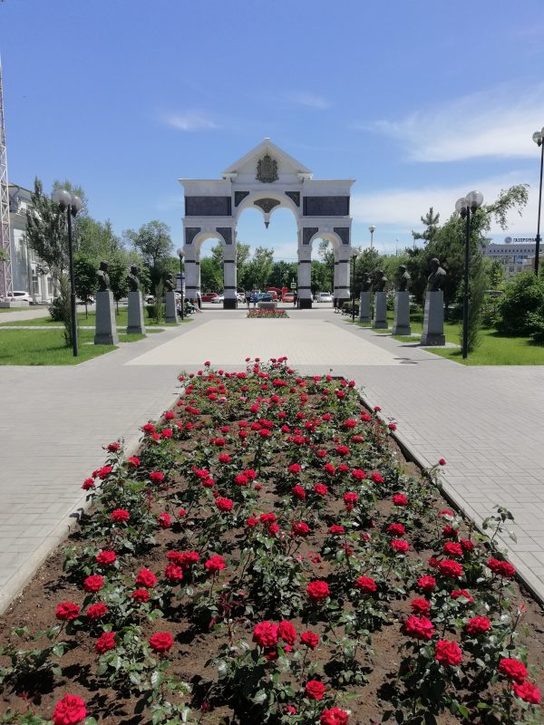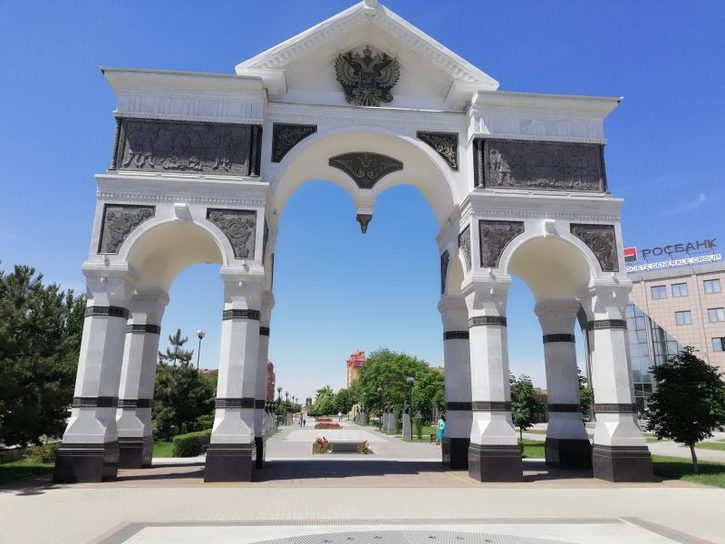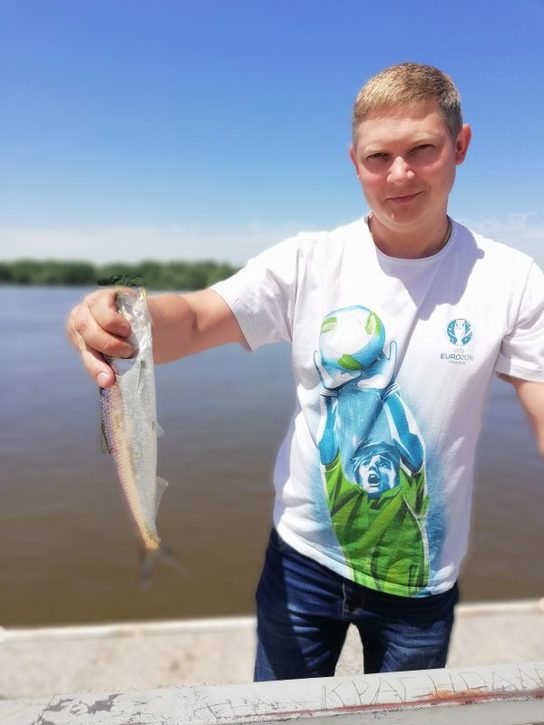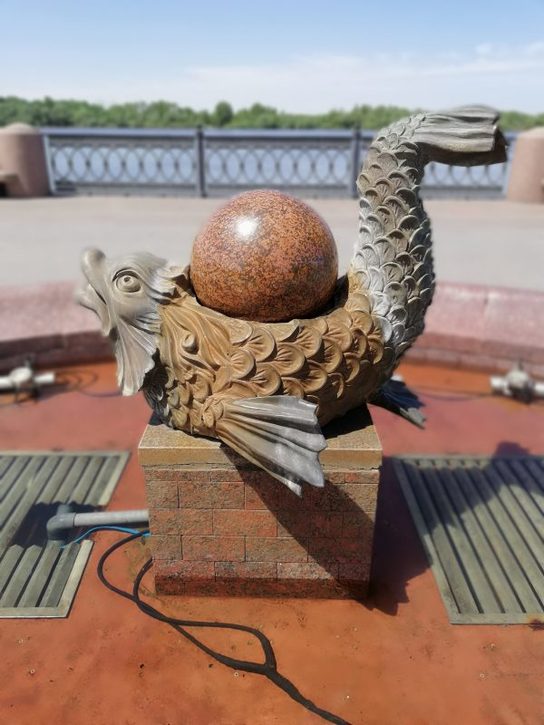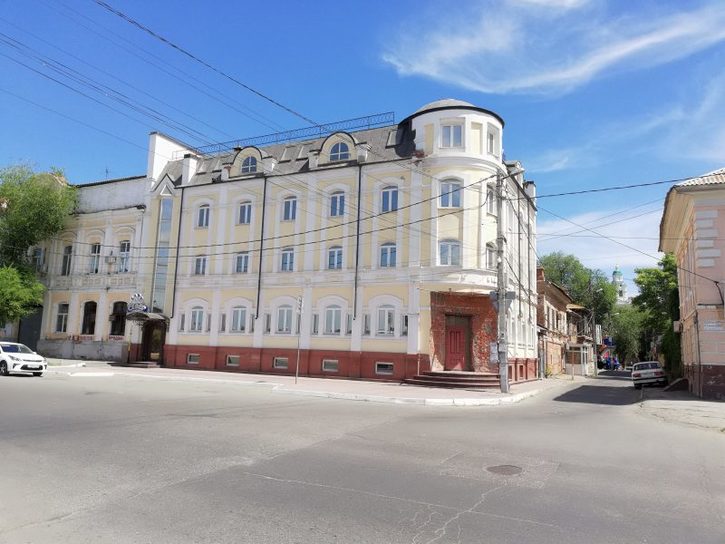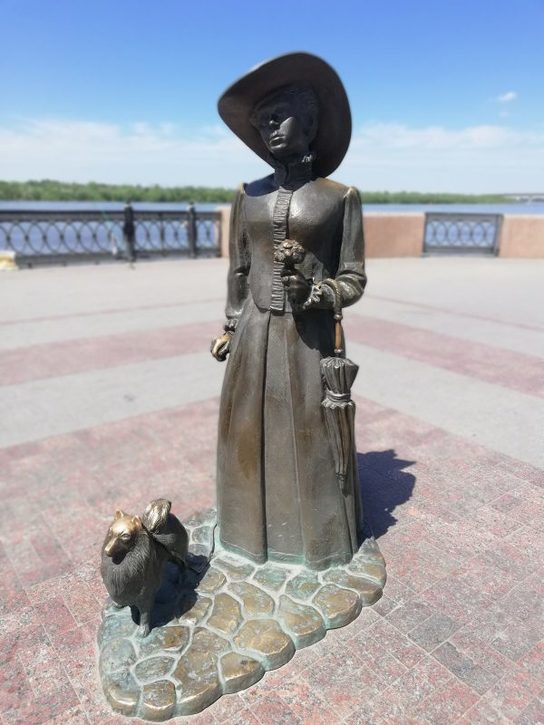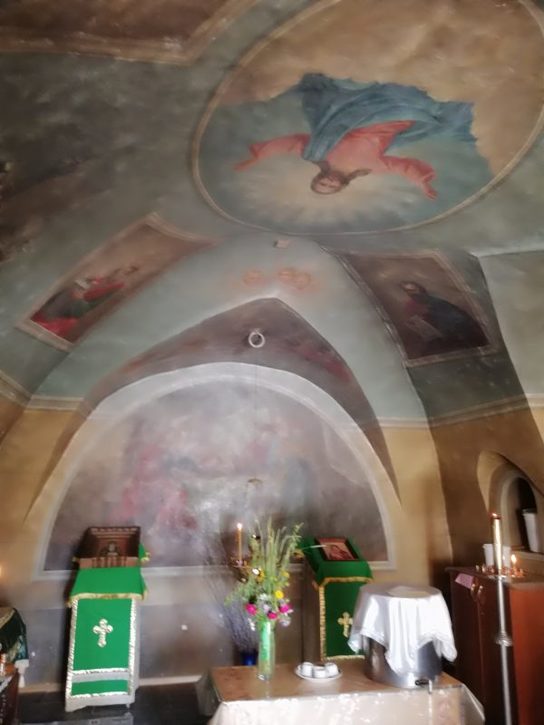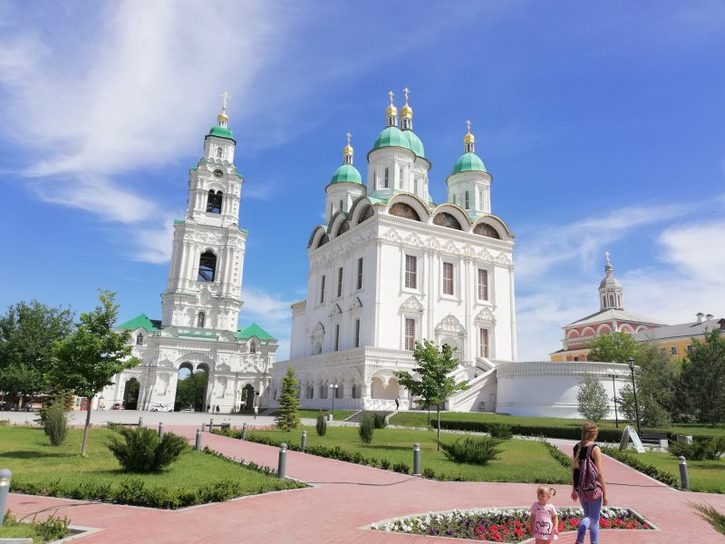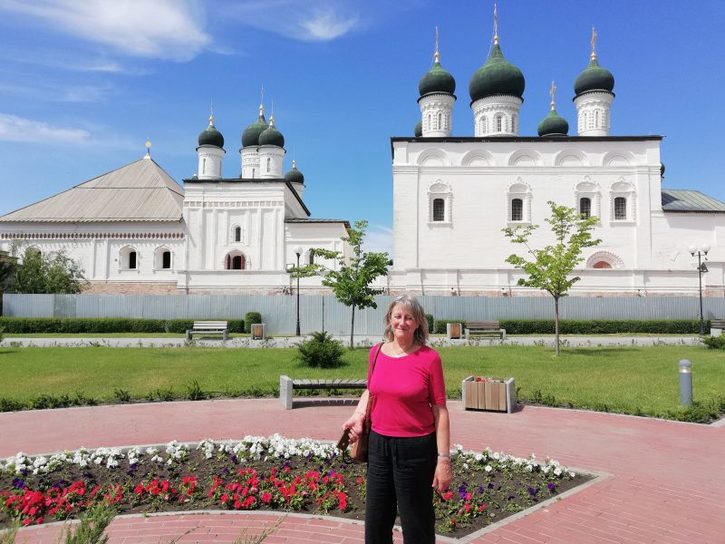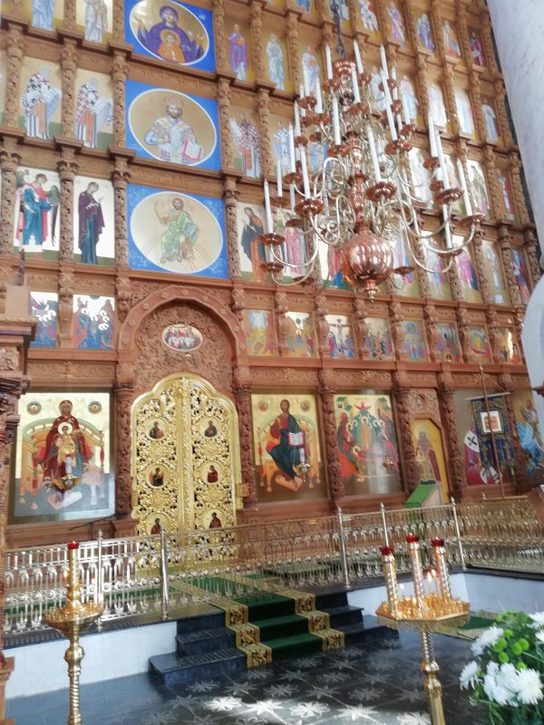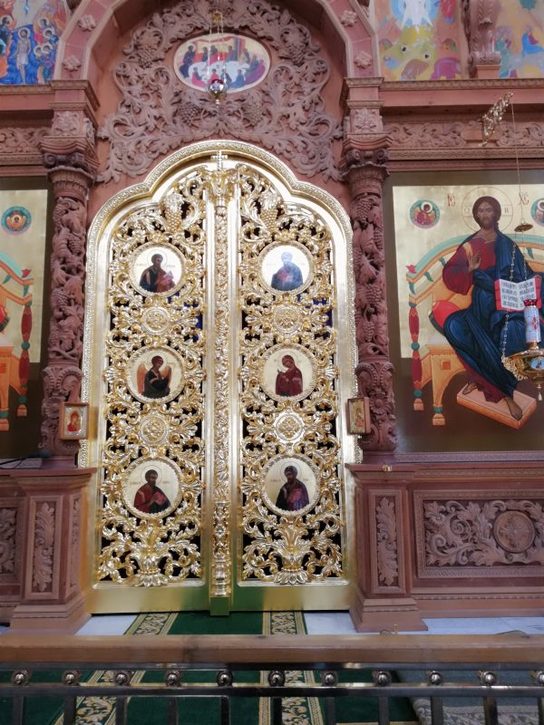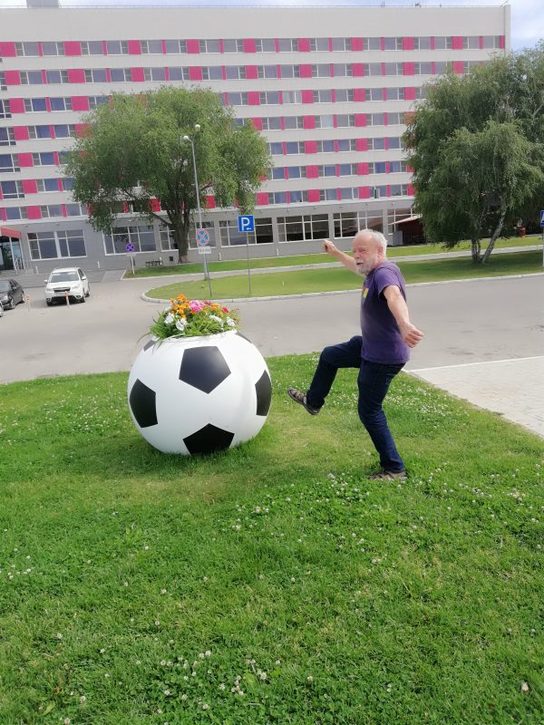A relaxing day, which I needed after yesterday’s long drive. We walked along the Volga Embankment, and saw the various statues and bronze models including the shoeshine boy, Peter the Great, a tortoise, a fish and Chekhov’s “Lady with a Dog”. There was an avenue of statues of famous Astrakhan citizens culminating in an arch to commorate the founding of the city in 1556 after the Astrakhan Tatars left the city.
We spent some time in the Astrakhan Kremlin, which was built after the Tatars had been driven out by Ivan the Terrible.
The fertile area of the Volga Delta formerly contained the capitals of Khazaria and the Golden Horde. Astrakhan was first mentioned by travelers in the early 13th century as Hajitarkhan (“The Great King who has Visited Mecca”). Tamerlane burnt it to the ground in 1395. From 1459 to 1556, Hajitarkhan was the capital of Astrakhan Khanate. The ruins of this medieval settlement were found by archaeologists 12 km upstream from the modern-day city.
In 1556, the khanate was conquered by Ivan the Terrible, who had a new fortress, or kremlin, built on a steep hill overlooking the Volga in 1558. This year is traditionally considered to be the foundation of the modern city.
In 1569, during the Russo-Turkish War (1568–1570), Astrakhan was besieged by the Ottoman army, which had to retreat in disarray. A year later, the Ottoman sultan renounced his claims to Astrakhan, thus opening the entire Volga River to Russian traffic. The Ottoman Empire, though militarily defeated, insisted on safe passage for Muslim pilgrims and traders from Central Asia as well as the destruction of the Russian’s fort on the Terek river. In the 17th century, the city was developed as a Russian gate to the Orient. Many merchants from Armenia, Safavid Persia, Mughal India and Khiva khanate settled in the town, giving it a cosmopolitan character.
Starting in A.D. 1324, Ibn Battuta, the famous Muslim traveler, began his pilgrimage from his native city of Tangier to Mecca. Along the 75,000 mile trek, that took nearly 29 years, Ibn Battuta passed through Astrakhan, located on the Volga River which he refers to as the river Athal. He then claims the Athal is, “one of the greatest rivers in the world.” In the winter, when the weather is very cold, the Muslim King, or Sultan, stays in Astrakhan and orders the people of Astrakhan to lay many bundles of hay down on the frozen river. He does this to allow the people to travel over the ice. When Battuta and the King spoke about Battuta visiting Constantinople, which the King granted him permission to do, the King then gifted Battuta with fifteen hundred dinars, many horses and a dress of honor.
For seventeen months in 1670–1671, Astrakhan was held by Stenka Razinand his Cossacks. Early in the following century, Peter the Great constructed a shipyard here and made Astrakhan the base for his hostilities against Persia, and later in the same century Catherine the Great accorded the city important industrial privileges.
The city rebelled against the Tsar once again in 1705, when it was held by the Cossacks under Kondraty Bulavin. A Kalmuck khan laid an abortive siege to the kremlin several years before that.
In 1717, Astrakhan served as a base for the first Russian venture into Central Asia. It was granted town status in 1717 as shown on the arch (see pic). In 1702, 1718 and 1767, it suffered severely from fires; in 1719 it was plundered by the Safavid Persians; and in 1830, cholera killed much of the populace.
Astrakhan’s kremlin was built from the 1580s to the 1620s from bricks taken from the site of Sarai Berke. Its two impressive cathedrals were consecrated in 1700 and 1710, respectively. Built by masters from Yaroslavl, they retain many traditional features of Russian church architecture, while their exterior decoration is definitely baroque.
